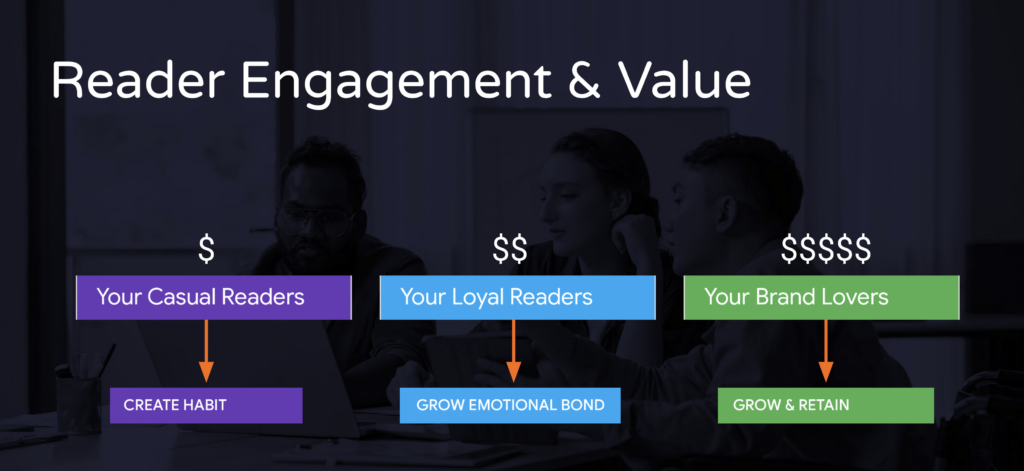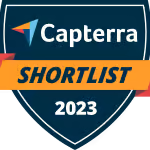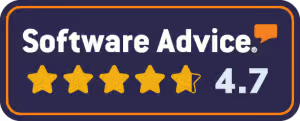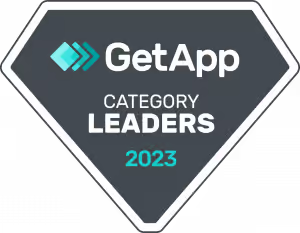Publishers have long focused on uniques and page views as their key metrics for success. But with the emergence of digital and massive companies like Facebook and Google, following this metric is no longer enough for publishers to stay afloat—or keep ahead—in the digital game.
So what should be the focus for publishers? Is it to get more overall total traffic and unique visitors so they can boast higher numbers and try to compete with Facebook and Google? Joel Pape, founder and CEO of MediaOS, shares his thoughts after more than 15 years of working in the publishing advertising sales space.
Your Numbers Are Better Than You Think
For most publishers, especially city or regionally based, competing in the digital landscape feels like a game of My Horse Is Bigger Than Your Horse when it comes to numbers. Publishers have turned to growing their numbers of uniques and page views, often feeling like they’re not succeeding, especially when Google or Facebook boast numbers in the hundreds, thousands, and even millions.
“Publishers only look at the big numbers,” Joel explained. “From an advertising sales standpoint, I believe if you’re going to say we have this many uniques, great. So does Google. And Google and Facebook will win if you try to go toe-to-toe with them on numbers. You can’t go down that road.”
But there is hope for publishers: Your numbers are better than you think. You just need to reframe how you’ve been approaching them.
“Advertisers don’t want to hit everyone. They want qualified customers. They want ads to actually show up to quality consumers. That is the thing that Google is not selling—a quality, engaged audience with the community, and it’s what can set you apart.”
Bigger numbers aren’t always better. Think about your market penetration. Let’s say you have an email list of 10,000 in a community of 100,000. By the time you subtract out approximately 20,000 children and retired or nursing home folks, you now have about 80,000. Then, by looking at how many of that remaining number are married or in a relationship, you can probably cut that down to about 60,000. Now, if you have 10,000 emails, you theoretically have access to 1 in 6 homes in your community. That’s actually pretty good market penetration.
Building a Known Audience Increases Your Ad Value
Boasting a market penetration of 1 in 6 homes increases your value to advertisers and lets you reframe the conversation. No longer are you scrambling to compete with massive numbers and outrageous claims, you’re now able to pitch your engaged, qualified audience to your local advertiser.
“If publishers can know that they have a better quality audience and that advertisers’ ads are being seen by those who the advertisers want to get to, then it’s no longer just ‘We get X number of uniques.’ It’s now ‘We have this much of a known audience. We know who they are, that they’re engaged. We know who’s seeing your ad digitally. We have their email address, their login. We actually know they have an affinity for this neighborhood and that your ad is not going to somehow magically show up through some random robots or to some random person from Taiwan. We can get you meaningful views,” Joel explained.
Focus On Selling the Quality of Your Audience, Not Faceless Page Views.
A better quality audience makes you more valuable to your advertisers and allows you to charge top-dollar, but how do you go about building one?
“One of the problems that really prevents a publisher from being able to charge top-dollar is their audience. If you break their audience down and take all their total page views, divided by their total unique people per month, it’s like 1 or 2 pages per person—if even that. But even that number of total actual uniques can be broken down into three groups.”
Joel breaks down a publisher’s audience into three main categories: casual readers, loyal readers, and brand lovers.
Casual Readers
These are the readers that pass by, spend only a few seconds on your content, and you most likely never see them again. You have the most readers in this category. Casual readers account for almost 88% of your total readers, 66% of your total pageviews, and about 40% of your ad impressions. Most of the time, these are your readers who come in from generic search.
Loyal Readers
These are your readers who come back a couple times a month and consume a second or third page. These readers account for 12% of your total readers, 31% of total page views, and about 40% of your ad impressions.
Brand Lovers
These are your readers who’re consuming everything you’ve got, diving in, and just devouring your content. While they’re the smallest category, they’re also the most engaged. They make up less than 1% of your total readers, 6% of your total page views, and about 20% of your ad impressions. But the key is that they’re also likely consuming all your content every month, and spending the most time on your pages—and with your digital advertising.

Why a Qualified Audience Is So Important for Advertisers
Knowing the breakdown of your audience and pitching that audience to advertisers is important because it allows you to position your offerings more clearly.
“That’s the thing that Google is not selling—a quality, engaged audience with the community. And that part’s important. They’re engaged with the community. They engage with your content. It is not an ad in an environment where someone’s scrolling through TikTok and watching people fall down and then you have your ad next to that. That’s not building contextual reference. What do you want your brand represented by and the proximity of your ad?
That’s the difference between an ad on your local content versus the advertising agency down the street who offers social ads on any number of platforms. You’re able to show your advertiser that you can control the ad’s setting, and it’s in a more efficient and effective environment because it’s embedded in content the reader is already engaged with.
“Facebook can work, but talk about overcrowding. Do you want to be in the room with a million people trying to advertise, you’re yelling your message at people, and everyone else is yelling too? Or would you rather have your message and ad someplace quiet where people are really engaged, they’re the right people, and the ad will make an impact on them?” Joel explained.
Four Ways to Use Audience Quality to Your Advantage
1. Stop chasing the big, flashy numbers.
The first step is to stop chasing strategies that will lead you right back to where you started, chasing page views. One of those strategies is SEO. While SEO is a great strategy to implement for increasing your reach and effectiveness, Joel warns that publishers can get lost in the cycle of chasing SEO to bring in more casual readers that won’t impact your advertising value at the end of the day.
“That’s where publishers have to focus more on the quality of their digital audience. Publishers are spending a lot of effort on SEO. Great, but what does that mean? You’re just getting more impressions and views from people searching the internet generically and finding your content. If you’re talking about cool barbecue restaurants, that traffic might be coming from Texas and you’re in Minnesota.”
2. Know how your uniques break down into content consumption.
Joel argues that it’s not just enough to know how many uniques your website has. You need to drill down into the numbers to fully understand what’s going on.
“Publishers need to know how their uniques break down into content consumption,” he says. “It’s not, they have 10,000 uniques and 30,000 page views and, oh, everyone’s reading three articles. That’s not the case. It’s also not just looking at how many page views. It’s how much time did they spend on your website. The people that are coming through, 40% of their traffic is spending less than 30 seconds on their website, and then they’re gone, and they never see them again. That’s horrible traffic.”
Going back to your audience breakdown, your most effective categories are going to be your Loyal Readers and your Brand Lovers because they’re not only engaging with the most content on your site, but also spending the most time. Your Loyal Readers, who are getting about 40% of your ad traffic, are on average, engaging with 4.3 articles a month, but spending about 90 seconds on your page. That means your ad is going to have way more of an impact on them.
Then, consider your Brand Lovers who are devouring all your content, but spending the most time, around 2 minutes. “They’re the smallest portion of your audience, but they do massive amounts of interaction with you. Those are the people that when you’re running ads with them, boy, you’re making a heck of an impact,” Joel explained.
3. Consistently work to move your audience to more loyalty.
The goal is to constantly be working to convert your Casual Readers into Loyal Readers, and your Loyal Readers into Brand Lovers. If you can consistently work your readers down this funnel, you’ll drastically increase the effectiveness of your advertising, and thus the amounts you can charge.
Think of this process as a stair-step. With Casual Readers, the goal is to create a habit of them coming back to your website to consume more content. For Loyal Readers, you should be focused on growing an emotional bond with them to where they interact with your content on an even more frequent basis. And finally, with your Brand Lovers, the name of the game is retention. You want to focus on growing this group and retaining them with more quality content and information similar to what they’re already consuming.

4. Focus on your new selling proposition.
Building this qualified, known audience puts you back in the driver’s seat with your advertisers. So use it. Focus on what your engaged audience means to the advertiser, and how that will ultimately get them the results they’re looking for.
“If you want to compete against all these other options in the marketplace for people to spend their ad budget on, you need to focus on the unique selling proposition you have as a publisher,” Joel explains. “You know your audience and community better. You know the reader better. You know how to get your readers into an experience of genuine engagement versus scrolling for the next quick dopamine hit. You have people engaged in the community. People scrolling through Facebook may not be engaged in the community. If they’re not engaged in the community, they don’t care about what the new businesses are, the new restaurants, what’s going on, etc. That’s one of the things that can set you apart.”
You Have the Advantage—Just Take It.
At the end of the day, you may not be able to boast the outrageous numbers that Facebook and Google can, but by qualifying your audience and focusing on your unique selling proposition, you do have the upper hand. You just have to stop chasing the big numbers and focus on making what you do have even more valuable.
“Publishers have to shift and stop chasing the big numbers because they’re gonna lose. Build out quality audiences and then the advertisers will see the impact and the difference. And when they see the ads actually working, they’ll buy more,” Joel says.






